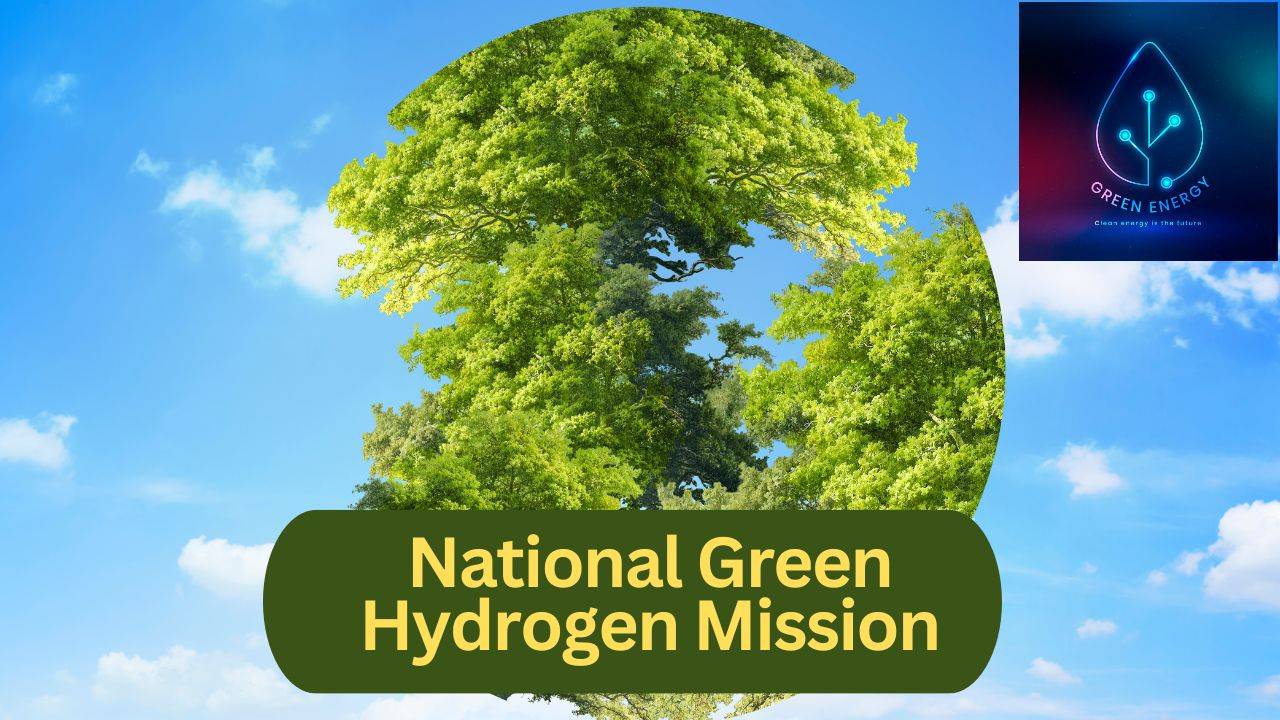-
Home -
News
India has a vision of achieving energy self-sufficiency by 2047 and reaching net zero emissions by 2070, hence the launch of the National Green Hydrogen Mission. Here’s an in-depth look.

India has a vision to achieve energy self-sufficiency by 2047 and reach net zero emissions by 2070. To achieve these ambitious goals, widespread adoption of renewable energy in every sector of the economy is central to India’s energy transformation. Strategy Green hydrogen is seen as a promising solution to facilitate this transition.
Hydrogen has the potential to play a role in long-term storage of renewable energy, replacing fossil fuels in industrial processes, supporting clean transportation, and potentially in decentralized power generation, aviation, and maritime transportation. Has the ability.
Objective of National Green Hydrogen Mission
The Union Cabinet on 4 January 2022 gave its approval to the National Green Hydrogen Mission which aims to achieve the following key goals:
-
Establishing India as a global leader in production and distribution of green hydrogen.
-
Creating export potential for green hydrogen and related products.
-
Reducing dependence on imported fossil fuels and raw materials.
-
Promoting the development of domestic manufacturing capabilities.
-
Attracting investment and business opportunities for the industry.
-
Creating employment opportunities and promoting economic development.
-
Providing support for research and development initiatives.
Expected results of the National Green Hydrogen Mission
Expected achievements by the year 2030 include:
-
Establishing green hydrogen production capacity of no less than 5 million metric tons per year, with an additional renewable energy capacity of approximately 125 GW within the country.
-
The total investment exceeded Rs. 8 lakh crore.
-
Creating more than 600,000 job opportunities.
-
Overall decline in fossil fuel imports by more than Rs. 1 lakh crore.
-
Reducing greenhouse gas emissions by about 50 million metric tons per year.
Types of Hydrogen
Based on how hydrogen is extracted, it is divided into three main types:
-
Gray Hydrogen: This type is produced by methods such as coal or lignite gasification (resulting in black or brown hydrogen) or steam methane reforming (SMR) using natural gas or methane (resulting in gray hydrogen). ) is produced by a process called These methods are generally associated with high levels of carbon emissions.
-
Blue Hydrogen: Blue hydrogen is produced by gasification of natural gas or coal, with technologies such as carbon capture storage (CCS) or carbon capture utilization (CCU) reducing carbon emissions during production.
-
Green Hydrogen: Green hydrogen is produced by electrolyzing water using electricity generated from renewable energy sources. The environmental impact of green hydrogen production depends on the power source being carbon neutral. In essence, the more renewable energy there is in the electricity mix, the “cleaner” or more environmentally friendly the hydrogen will be.
World Hydrogen and Fuel Cell Day celebrations highlight the importance of hydrogen in developing a sustainable and prosperous future.
The Government of India in association with Solar Energy Corporation of India Limited celebrated World Hydrogen and Fuel Cell Day on 7 October 2023 in New Delhi. The event brought together experts in the field of hydrogen and launched a research and development initiative. (R&D) Roadmap worth Rs. 400 crore for National Green Hydrogen Mission. The main objective of this roadmap is to foster a strong research and development ecosystem to advance green hydrogen technology, facilitate its commercialization and support India’s climate and energy goals. It places a strong emphasis on innovation in materials, technologies, and infrastructure to increase the efficiency, reliability, and cost-effectiveness of green hydrogen production, storage, and transportation, while addressing technical challenges and safety concerns. Is.
First Published: 09 Oct 2023, 10:08 IST
Take the quiz.
Show your support for agrijournalism.
Dear Patron, Thank you for being our reader. Readers like you are our inspiration to advance agri-journalism. We need your support to continue delivering quality agri journalism and reach farmers and people in every corner of rural India.
Every contribution is valuable for our future.
